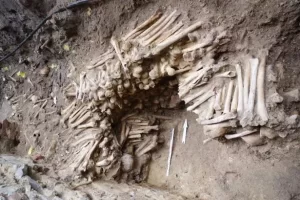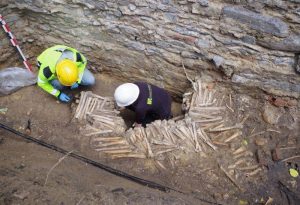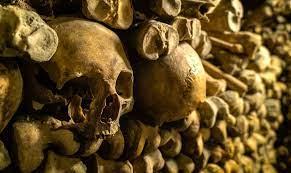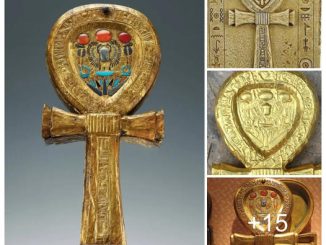More than 100 billion people have died since the Homo sapiens lineage first appeared roughly 50,000 years ago. And with so many bodies to bury, civilizations have repeatedly run out of convenient places to put them.
But humans are a resourceful bunch. To make room for new graves, the residents of Ghent, Belgium, apparently dug up some old burial grounds and assembled the bones interred within into nine walls. As Alan Hope reports for the Brussels Times, archaeologists conducted excavations ahead of construction of a cathedral’s new visitor’s center have now unearthed the remnants of these ghastly architectural feats. Discovered beneath Saint Bavo’s Cathedral, home of the famous Ghent Altarpiece, the newly discovered bone walls probably served a similar purpose to the catacombs of Paris, providing a second home for skeletal remains crowded out of old cemeteries.
So-called ossuaries aren’t uncommon, but typically, these chambers manifest in the form of loose pits filled with bones. The carefully constructed walls represent a first for Belgium, writes Janiek de Gryse, the archaeologist who led the excavation, in an email to Live Science’s Laura Geggel.
De Gryse adds, “We have never seen structures, like walls, which are intentionally built with human bones.” Composed mostly of adult thighs and shin bones, the walls are also interspersed with partially shattered skulls. Although fully intact skeletons presumably served as the builders’ primary fodder, most small and fragile bones, such as ribs, vertebrae and anything that once belonged to a young child, didn’t make it into the final product—possibly because the builders couldn’ t be troubled with collecting them. Also conspicuously absent are arm bones, which, all else equal, should have been sturdy enough to feature in the constructions.
For reasons unknown, these specific remains appear to have been poor fits, perhaps because they didn’t physically match the size of the leg bones or because they didn’t hold the right spiritual significance, as de Gryse tells Live Science.
Housed in the layer of dirt above the walls are additional human remains preserved as full skeletons, hinting that a more recent graveyard—one that may have unceremoniously booted the residents of its predecessor—remained in use for some time after the bony barricades were built, according to the Brussels Times. Per Live Science, radiocarbon dating suggests the bones in the walls belong to people who died during the second half of the 15th century. The walls themselves likely date to the 1600s or early 1700s.
Although the skeletal structures may seem callous to modern readers, de Gryse tells the Brussels Times that “the faithful believed in a resurrection of the body. The bones were considered the most important part.”

Considering that the alternative might have been simply throwing the remains away, the construction of the walls was perhaps less a disrespectful display than an extremely efficient tribute to the long-gone. While other ossuaries in Europe have gained fame as tourist attractions, Ghent’s bone walls seem destined for an afterlife out of the limelight. As de Gryse says to Live Science, the remains will be removed as construction continues and relocated to research facilities at the University of Ghent, which may, at long last, serve as their final resting place.




